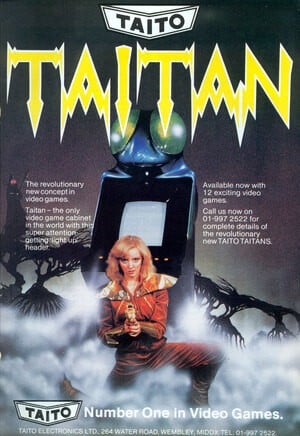
The notion of arcade cabinets with interchangeable boards is something that became commonplace in the mid-'80s when the JAMMA format was released, but Japanese giant Taito actually tried to pull off the same trick a few years beforehand – and it commissioned the aid of Roger Dean in order to do so.
Over on Arcade Blogger, the fascinating history of the Taito Taitan is revealed. Released in 1981 and exclusive to the UK market, this universal cabinet could house one of twelve of the company's most popular titles – but it was its eye-catching design that really caught the attention of players.

Available in 'bug' and 'knight' variants, the cabinets had massive Reaction Injection Moulding (RIM) heads on top, an attempt to reflect the kind of on-screen action players could expect when they inserted a coin.
These were created by none other than siblings Roger and Martyn Dean. Roger might be more familiar to music lovers and gamers for his cover artwork for the progressive rock band Yes, as well as his legendary work with Psygnosis; as well as contributing cover art for many of the company's early titles (including Shadow of the Beast), he also designed the iconic Psygnosis 'owl' logo and the logos of many of the games themselves. Dean also famously created the current Tetris logo.
Sadly, despite some considerable investment on behalf of Taito, the Taitan project was ultimately not successful. Speaking in the book Magnetic Storm, published in 1984, Roger and Martyn Dean explained one of the problems they faced, particularly with the green-coloured 'bug' variant of the cabinet:
Many amusement arcade operators come from the world of showmen and travelling fairs. Since their Taitans were also pure fairground products, [we] were astonished when the prototypes met some resistance from the trade. We discovered that the showmen’s reluctance was simply over the colour, a vivid metallic green. Showmen are enduringly superstitious, and green is unlucky. When you venture into a new field, you must learn the local folklore, the traditions, the taboos. Even the best-planned projects can fall foul of simple cultural oversights.
Today, there are examples of Taitan cabinets dotted around the UK, usually in the hands of collectors. For many, this is a part of the arcade scene which has largely been forgotten.
We recommend you head over to Arcade Blogger immediately and check out some of the incredible photos of the Taitan.
